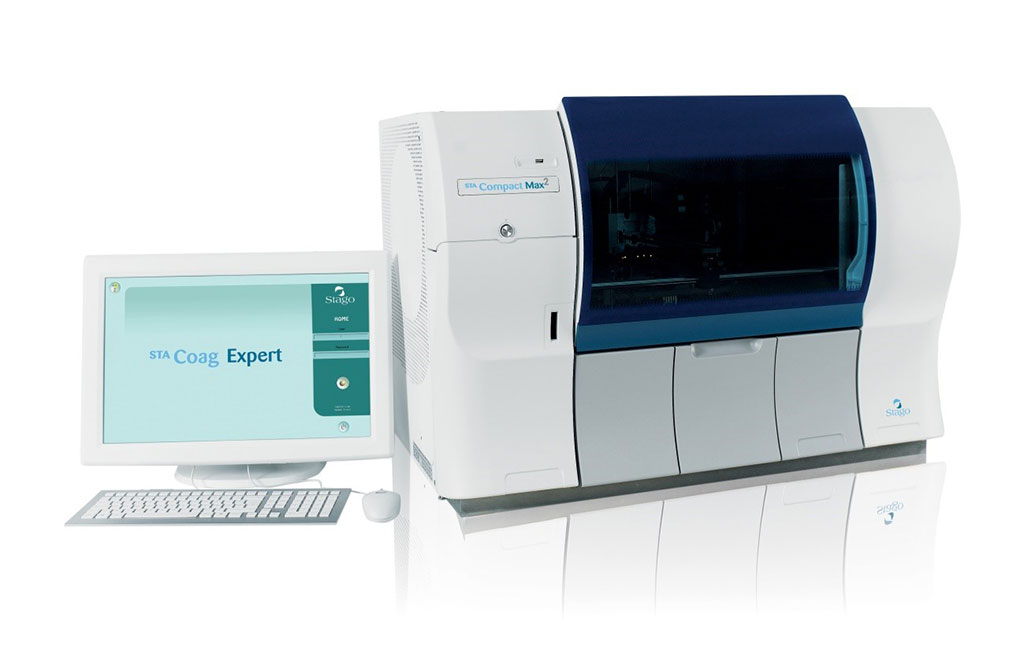Coagulation Function Explored for Gestational Diabetes Hemorrhage Risk
By LabMedica International staff writers
Posted on 10 Dec 2019
Gestational diabetes mellitus (GDM) is characterized as glucose intolerance of any degree that begins or first diagnosed during pregnancy. It possesses a higher risk of hemorrhage, which may be caused by the coagulation dysfunction.Posted on 10 Dec 2019
GDM is a common metabolic disease with variable prevalence rates between 0.6% and 15% worldwide, and it aggravates the risk of severe perinatal complications, such as massive hemorrhage, preeclampsia, shoulder dystocia, and macrosomia, for both mothers and offspring.

Image: The STA Compact Max is a fully automated benchtop analyzer built on the most reliable platform in the industry (Photo courtesy of STAGO)
Laboratory scientists at Sun Yat‐sen University (Guangzhou, China) recruited a total of 662 subjects (273 from a population‐based study and 389 from a prospective cohort study) who were selected to measure mean platelet volume (MPV), platelet distribution width (PDW), platelet (PLT), thrombocytocrit (PCT), prothrombin time (PT), activated partial thromboplastin time (APTT), thrombin time (TT), and fibrinogen (FIB).
All pregnant individuals were divided into normal glucose tolerance (NGT) controls and GDM patients diagnosed between the 24th and 28th weeks of gestation. Platelet parameters (MPV, PDW, PLT, and PCT) analysis was performed on an Automatic Blood Cell Analyzer (Abbott Laboratories, Abbott Park, IL, USA). Coagulation parameters (PT, APTT, TT, and FIB) analysis was performed on an Automatic Coagulation Analyzer, the STAGO STACompact (STAGO, Asnières sur Seine, France).
The team reported that compared with normal glucose tolerance (NGT) controls, GDM females showed shortened PT, shortened APTT, and increased blood FIB levels, while the platelet parameters MPV, PDW, PLT, and PCT remained unchanged in mid‐pregnancy. By late pregnancy, the platelet parameters MPV, PDW, and PCT were increased in the GDM group compared with the NGT group, while PT and APTT were unchanged.
The authors concluded that the GDM group was hypercoagulable compared with the NGT group rather than hypocoagulable as predicted, but still within the normal range. Therefore, their findings demonstrated that the variation degree of coagulation function is not responsible for extra risk of hemorrhage in GDM, and prevention of hemorrhage should focus on other causes. The study was published on November 27, 2019 in the Journal of Clinical Laboratory Analysis.
Related Links:
Sun Yat‐sen University
Abbott Laboratories
STAGO













